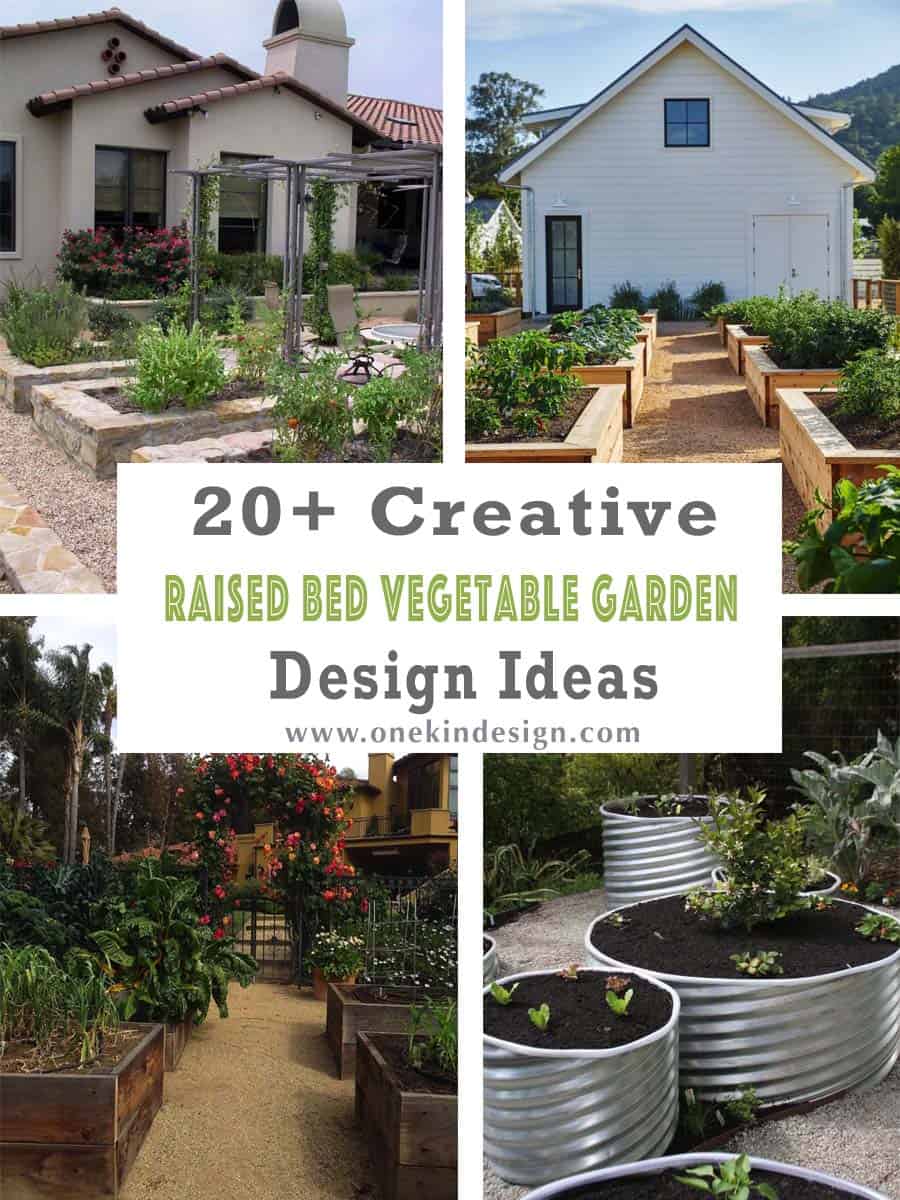
Embrace the farm-to-table movement by growing vegetables and herbs for use in the kitchen by creating a raised bed vegetable garden on your property. Most edibles will thrive in raised beds that have great drainage and warmer soil. Try using a fence to separate your vegetable garden from the rest of the gardens, and to keep smaller critters from eating the produce.
The general rule for gardens is to provide full sun because most vegetables need 6-10 hours of sun a day to thrive. However, in hot climates, partial shade in the middle of the day gives you more flexibility in what to plant. If your garden gets full sun, you should consider shading to reduce the harshest effects of the hot sun. You can also adjust your planting time by planting around the hottest mid-summer months.
You have three options with raised vegetable planters — any option is perfectly acceptable:
- Build the planters from decay-resistant material, such a redwood, cedar, or teak, and omit any waterproofing of the interior boards.
- Build the planters from less decay-resistant materials, such as painted douglas fir. Line the interior with roofing paper or another waterproof membrane.
- Build the planters from pressure-treated wood and line the interior with roofing paper to prevent the leaching of chemicals into the soil. Don’t forget to put wire mesh on the bottom to protect from gophers (if you have them in your area)!
Note: If you opt to use Cor-ten steel or other metals for your herb and veggie gardens, paint the interior with Rubberizit non-toxic rubber compound. This keeps any metal from leaching into the soil. It’s a great product and can be found online.
1. An area that used to be synthetic grass putting green is now a healthy vegetable garden. Raised beds were built and filled with a mixture of organic soil and leaf mold. This garden provides spring through late fall vegetables. This includes lettuces, tomatoes, beets, peas, eggplant, zucchini, asparagus, and plenty of basil and other herbs. The height of each box is 12″ deep. This fenced area is 20′ wide by 40′ long. There are 4 rectangular beds in each corner that are 4′ x 8′. There are another 4 “L” shaped beds that are 4′ x 8′ x 4′ x 8′. The lumber is cedar, from a local supply store. (via Earth Mama Landscape Design)
2. These custom planter boxes are made out of cedar, with a non-oil-based stain on the outside so chemicals will not seep into the soil. Stainless steel anchor bolts are used to secure the boards. Filter fabric covers the inside of the planter boxes with a plastic vapor barrier. An automatic irrigation system is installed in the boxes. The surface material ½” native grit (New England), a blend of brown, gray, white, and tan. (via Conte & Conte)
3. This sunny courtyard features raised garden beds filled with Tulips. The bulbs are planted for the spring and then removed after they flower to make room for the veggie garden during the summer months. Cedar is used for the planter boxes which tolerate harsh New England winters. A layer of fabric weed barrier is used beneath the 1/2″ gravel. (via Conte & Conte)
4. This is a kitchen farm-to-table garden. Tomatoes and strawberries are planted in the planters. The planters are a lower grade of cedar, but you can also use redwood, however, the color will be slightly different. The pathway between the raised garden beds is a course decomposed granite. 4 inches were put over a substrate of gravel. (via Holder Parlette Architecture)
5. These planter boxes are composed of galvanized siding, concrete corners, and bluestone caps. To build the fence, the material is called galvanized pan sheeting — typically used for large building construction for forming concrete floors and forms. (via Michael Tebb Design)
6. These wooden vegetable planters are constructed out of cedar. The ground cover is a recycled black bark. It’s basically ground-up wood pallets that then get dyed black. (via Clean Cut Landscape)
7. A farmhouse in Portland, Oregon features sides made with corrugated steel (or aluminum), anchored by wooden posts. The wooden ledge around each bed is broad enough to sit or set your garden tools. (via Stone Bridge Homes)
8. These veggie beds in Southern California are created with CorTen steel. There is so much food developed in these beds, the homeowner hardly has to buy anything! These are the Veradek Metallic Series 4 ft x 4 ft Corten Steel Raised Garden. They offer a deep planting base for large and small plants and are frost and crack-resistant in colder climates. The corten steel will develop surface rust but does not rust through. Perfect for a raised planter garden! (via Urban Oasis)
9. A California wine country estate features this elegant garden with raised beds of stacked stone. These planters are filled with herbs such as basil and parsley and delicious vegetables such as squashes and cutting flowers for a fresh vase on your kitchen counter. A raised stone bed will be highly durable and will give you a refind style, but is more costly to create. (via Bevan Associates)
10. A galvanized water trough vegetable garden is perfect for urban gardening and small outdoor spaces. There are fantastic for vegetable growing and are quite deep and wide, coming in an array of sizes. Edibles do great in their neutral growing condition. They are lightweight, which makes them simple to move to your desired location before filling them with soil. Be sure to drill a drainage hole. Purchased from a local feed supply store or online, starting around $60. (via Aloe Designs)
11. This clever raised bed vegetable garden idea is simply a drainage culvert cut into pieces. The edges will be sharp and uneven. You will need to polish them with power tools and over with a flexible material. This could entail simply splitting a hose and pressing it over the edge, or covering it with sheet metal. Culverts will rust, so you will need to protect the finish with something sprayed on the outside. (via Natalie Serdiuk)
12. A traditional vegetable garden in the Philadelphia countryside. Late spring, early summer when the temperatures are still cool, lettuce and pansies grow in this garden. In the late summer heat, tomatoes and peppers are harvested almost daily, along with herbs of basil, parsley, and thyme. The zucchini squash is planted on its own, requiring additional space given its large and decorative leaves. Providing a natural perimeter fence around the garden is the espaliered apple trees. (via Dear Garden Associates)
13. The homeowner of this farmhouse garden in Napa, California wanted easy access when picking veggies and herbs without bending over (back pain). The solution was to design higher-raised boxes. It is a simple design with drainage at the bottom and lined with a waterproof fabric. Cedar untreated is the best for raised beds. It is a little more expensive but it is worth it. (via Back Bay Stone Supply)
14. A Bocce Ball court is lined by a raised bed vegetable garden. These planter boxes are welded squares, open on top and bottom — 3’x3′ x 16″. These are custom from a local steel fabricator out of 1/4″ steel (typical cost is about $300 each). The gravel under the planters is 3/8″ crushed rock. For the Bocce Ball court, typically you want 60′ in length. This one is only about 45′ long by 10′ wide, with an oyster shell added. (via Huettl Landscape Architecture)
15. A backyard vegetable garden in Northern California features decomposed granite, where the large wooden planter boxes have been set on top. Fencing keeps the animals out. Wood to use for this application would be red or yellow/white cedar, as they have a natural toxin that helps to fight decay. (via Blasen Landscape Architecture)
16. A star planter in the center of this veggie garden features a dwarf lemon tree. Strawberries cascade over the edges of its six-points (inspired by the Great Seal of the United States). The star is 6′ and offers 3′ of clearance around it to make the other veggie beds easily accessible. The box is made of redwood and the exterior is treated with Cabots Semi-Transparent stain (redwood) to protect from the elements.
Redwood is rot and insect resistant and the beds are lined with house wrap (moisture barrier to protect the wood from rot). Soil depth is about 28″. The entire garden area is 19′ square feet. Ground cover is redwood compost. TIP: Line the bottom of your boxes with 19 gauge, 1/4″ coated wire mesh to prevent moles and gophers from eating the entire crop.
17. A deck garden in Northern California three weeks after planting. Steel U-braces wrap around the raised beds on 3 sides. The boxes are about 30″ deep and are raised up on 2″ steel frames. This enables water drainage out of the bottom of the beds. Air circulation between the planter and the deck allows for dry time between waterings (bottom of the wood will eventually rot, but the spacers slow the process). (via Steve Masley Consulting and Design)
18. This cottage garden in Massachusetts features two raised cedar vegetable beds flanking a brick walkway inside a white picket fence. A company called Naturalyards makes these garden planter, which comes in a variety of shapes and sizes and is easily assembled. Edibles include lettuce, broccoli, and tomatoes. (via Nilsen Landscape Design)
19. A vertical planting system edges the deck of a home in Chicago’s Lincoln Park neighborhood. The herb wall is 13′ long x 49″ tall x 16″ deep. It was constructed out of Ipe wood. (via Brent Riechers Landscape)
20. This fabulous Tuscan home in Southern California features raised beds and a gate surrounded by Joseph’s Coat climbing rose. Veggies include artichokes, beets, swiss chard, fava beans, lettuce, ruby chard, kale, and tomatoes along with herbs such as Italian basil. Bu’s blend compost is used in the beds. It has no salts, no pathogens and is super safe, and won’t burn. (via Jackie and the Beanstalk)
21. In the Texas Hill Country, these raised bed vegetable gardens are Native Texas limestone mixed with sandstone, 4″ thickness. The stone planters are roughly 3′ x 6′ in the planting space and a 14″ to 16″ stone seat/surround width. The ground cover is comprised of a base of decomposed granite topped with 1-1/2″ of 3/8″ pea gravel. The trellis was made of painted tubular steel. (via Sitio Design)
22. The bed edge of this raised planter is 16 gauge steel —12-inch strips cut from a 4×8 sheet, overlapped and bolted together. Any steelyard will have this product. The galvanizing was removed with a chemical solution to create the rusted effect. The curves are supported by the soil. (via OLIVINE Land)
23. These planter boxes are constructed of 2 x 6 boards and a 2×8 cap, with a total height of 18″. This is an ideal height for working on the beds without having to bend over. Keep in mind, the higher you make the beds, the harder it is to wheelbarrow dump new compost or soil into it. The wood is stained in a Cabot Stain, Pepperwood Solid Stain. (via Kikuchi + Kankel Design Group)
24. This beautiful outdoor garden in Rockwall, Texas features raised beds with tomatoes, squash, and other vegetables. A potting shed provides the finishing touch! Both the potting shed and the raised beds were DIY’ed. (via @bloomingivylane)

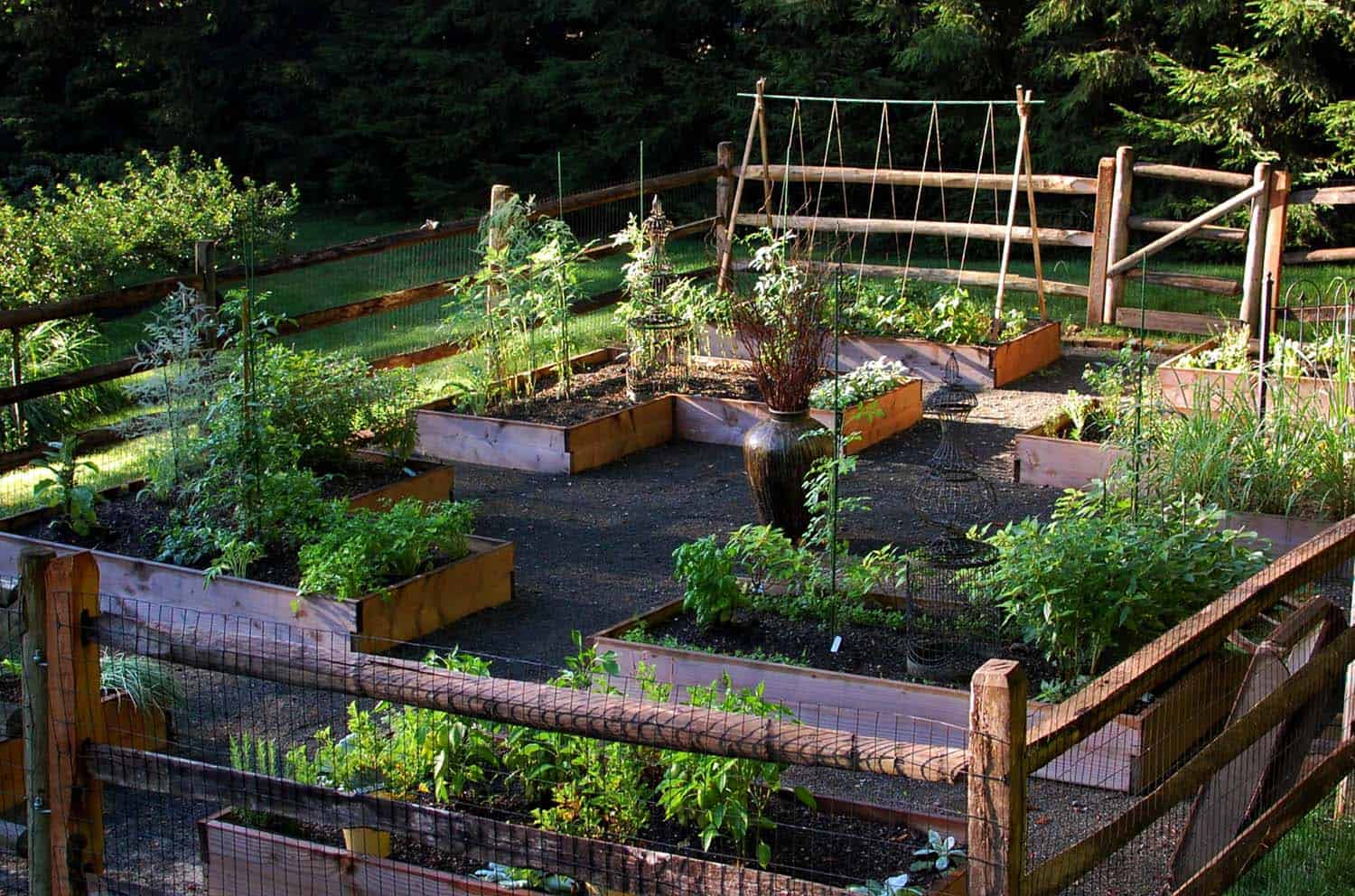
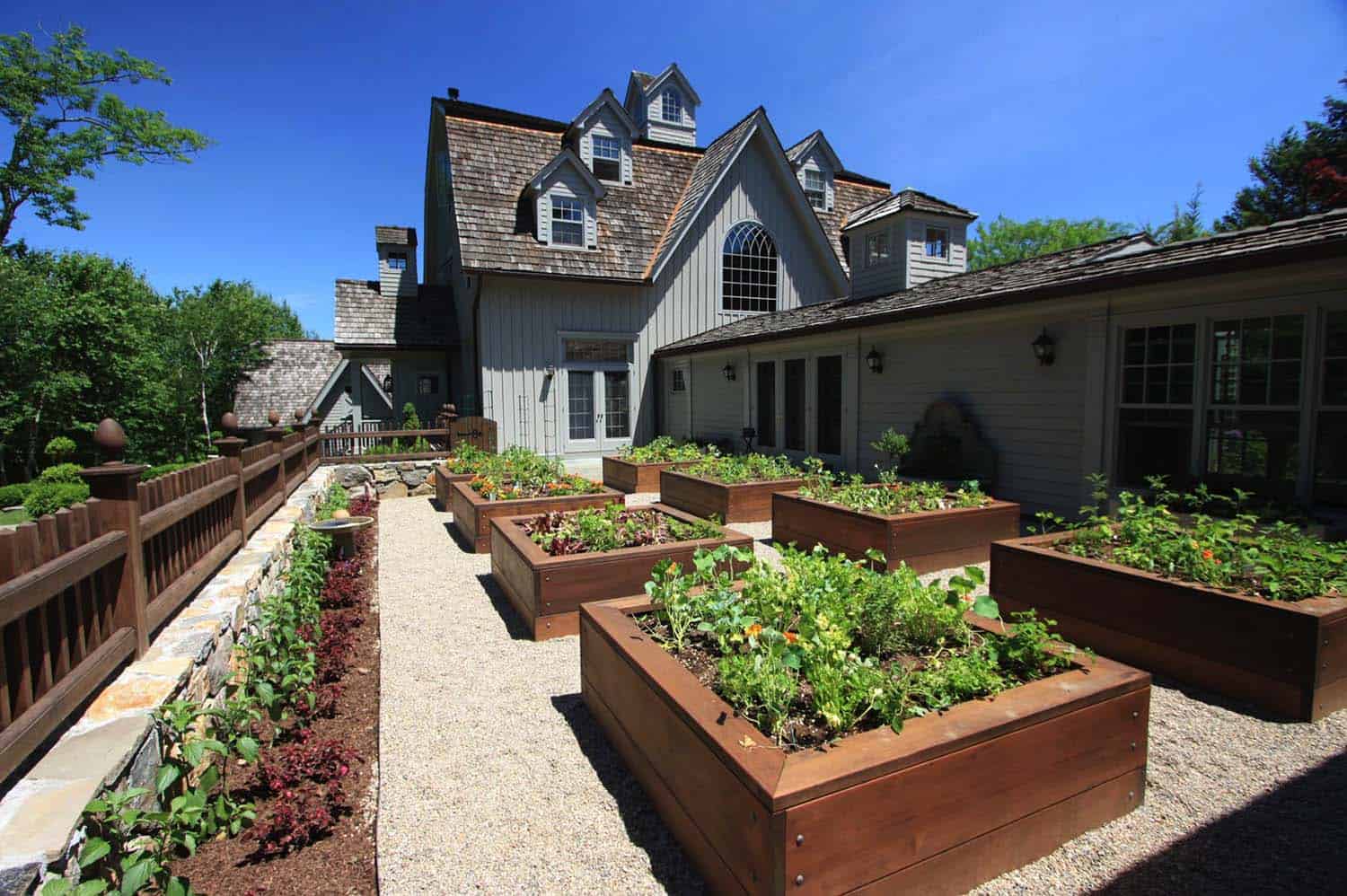

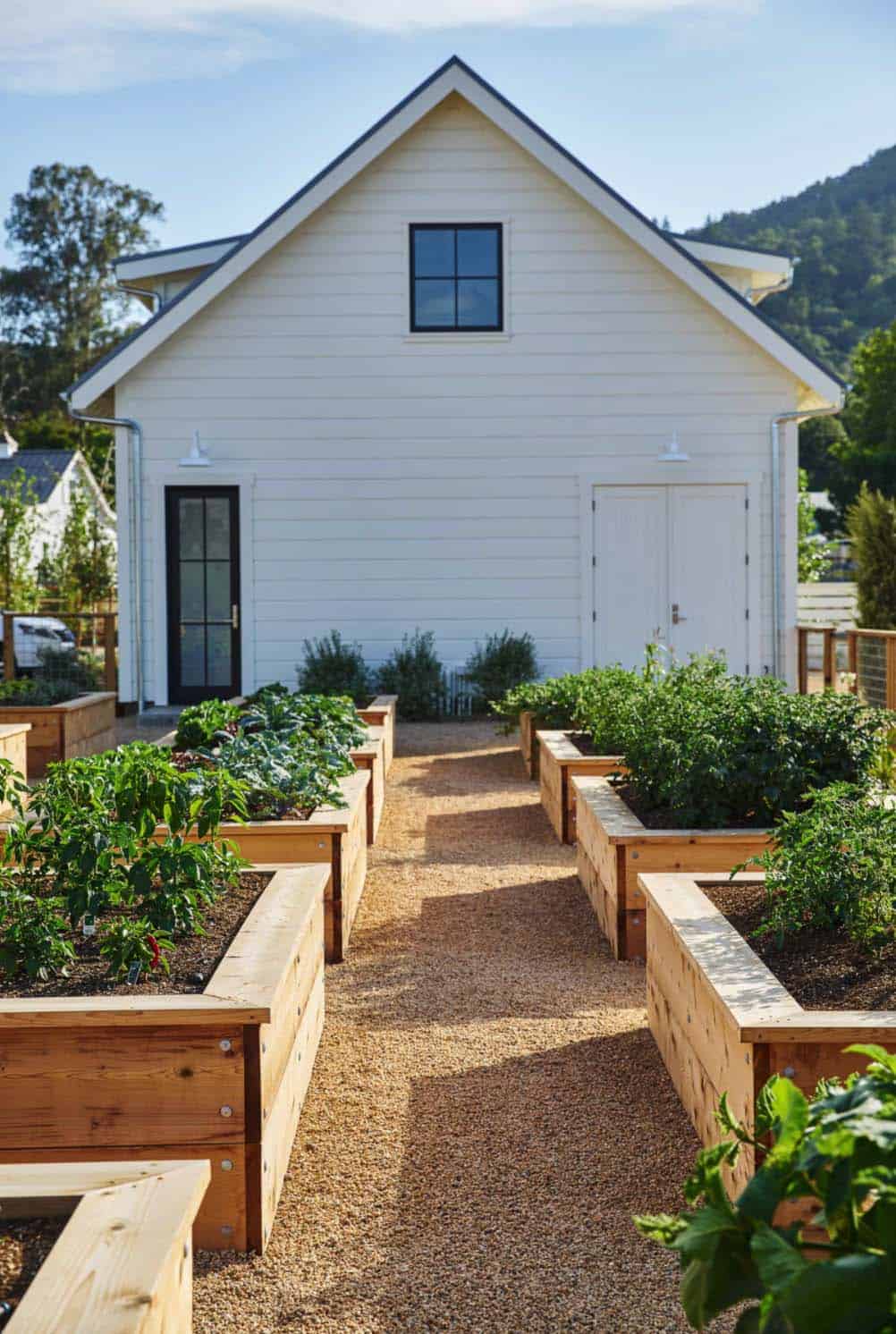
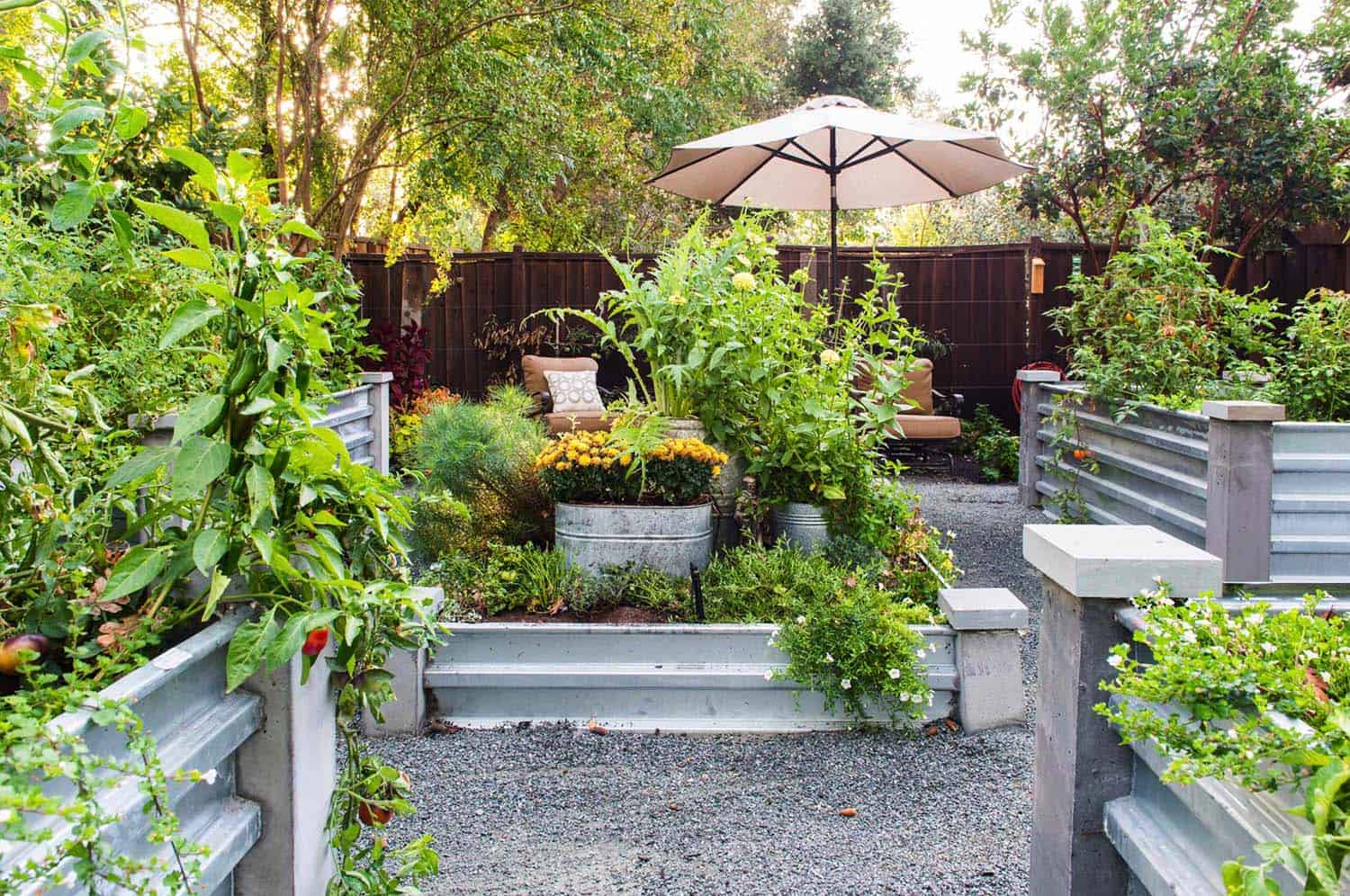
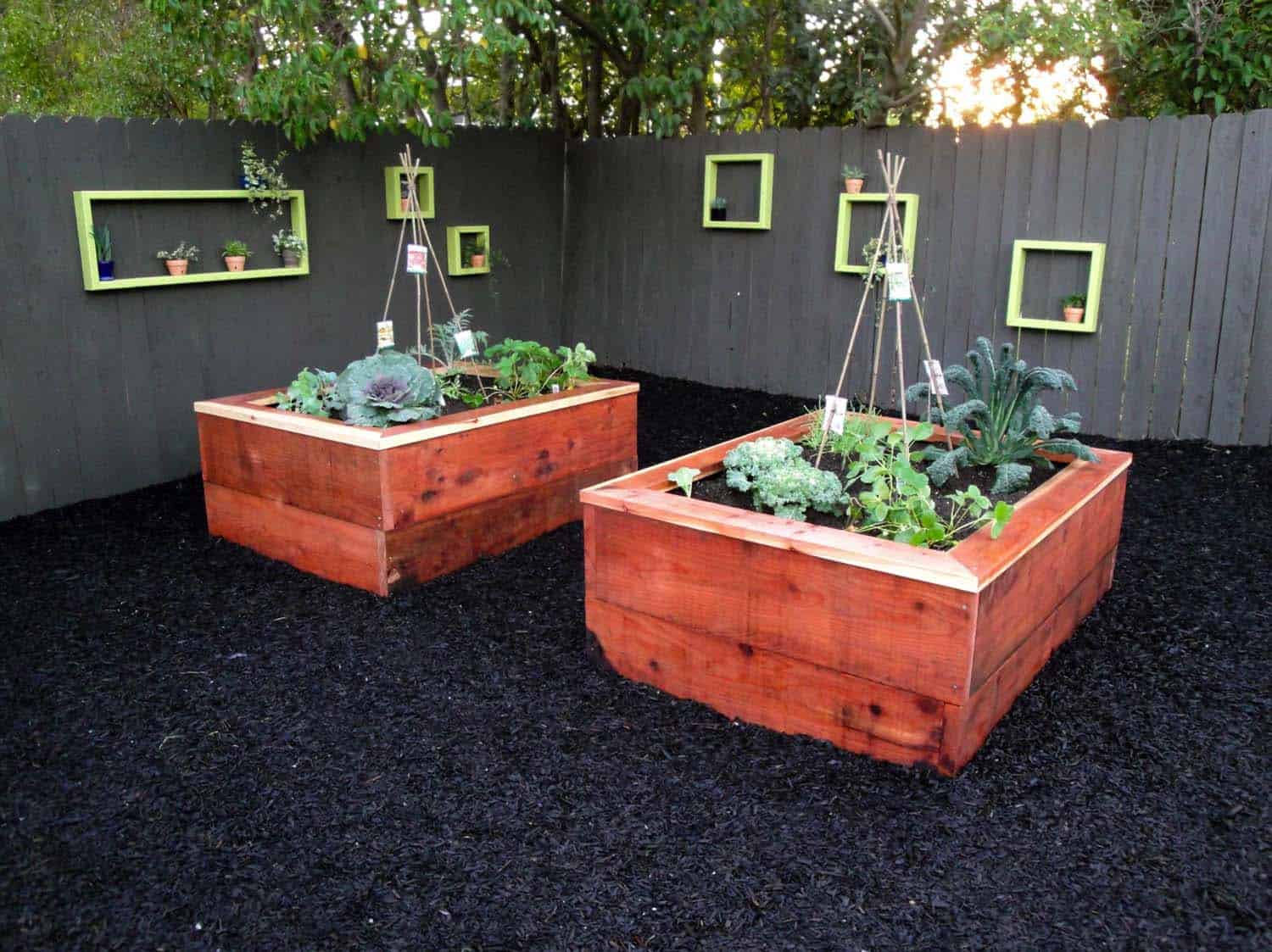

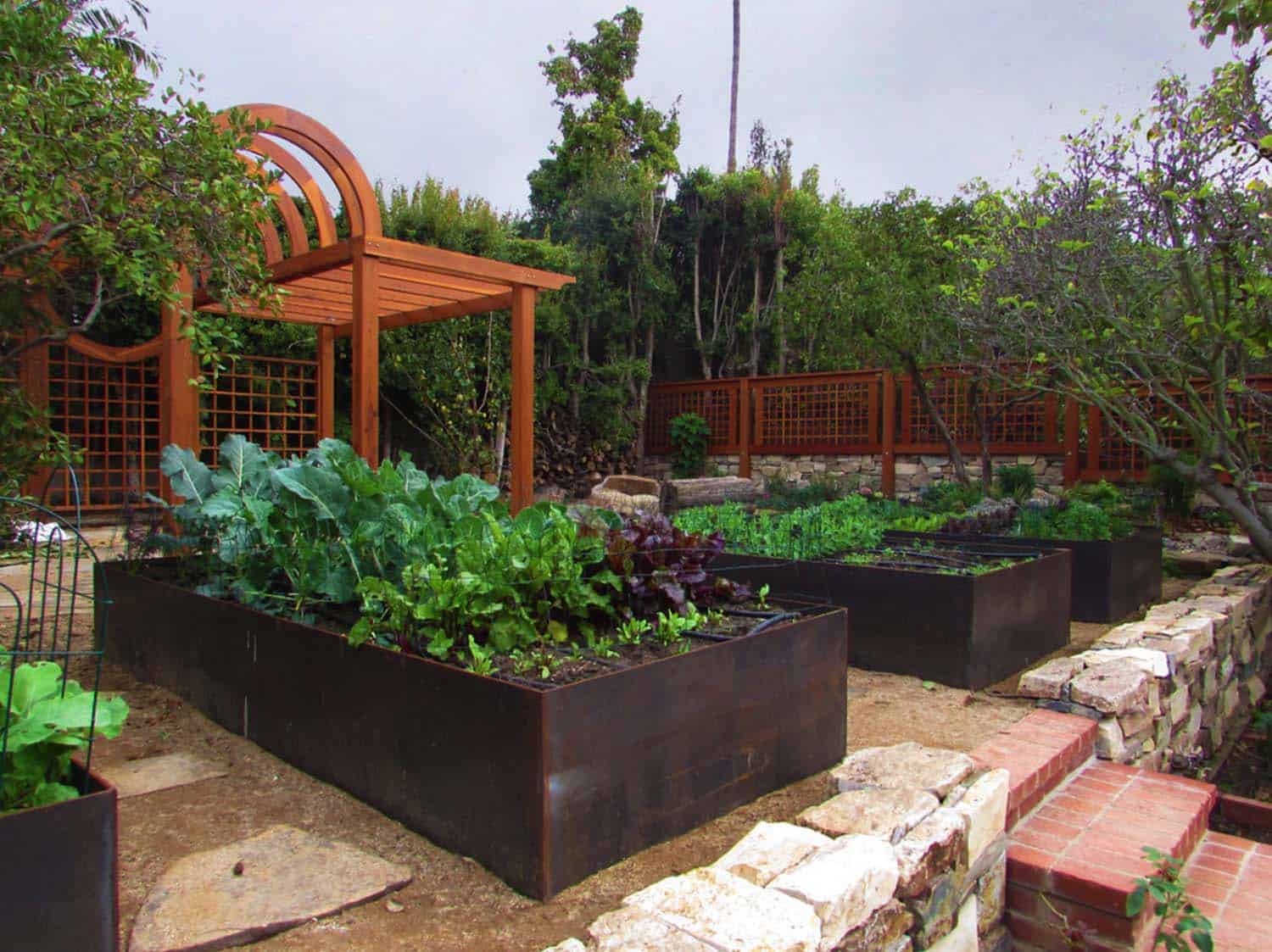
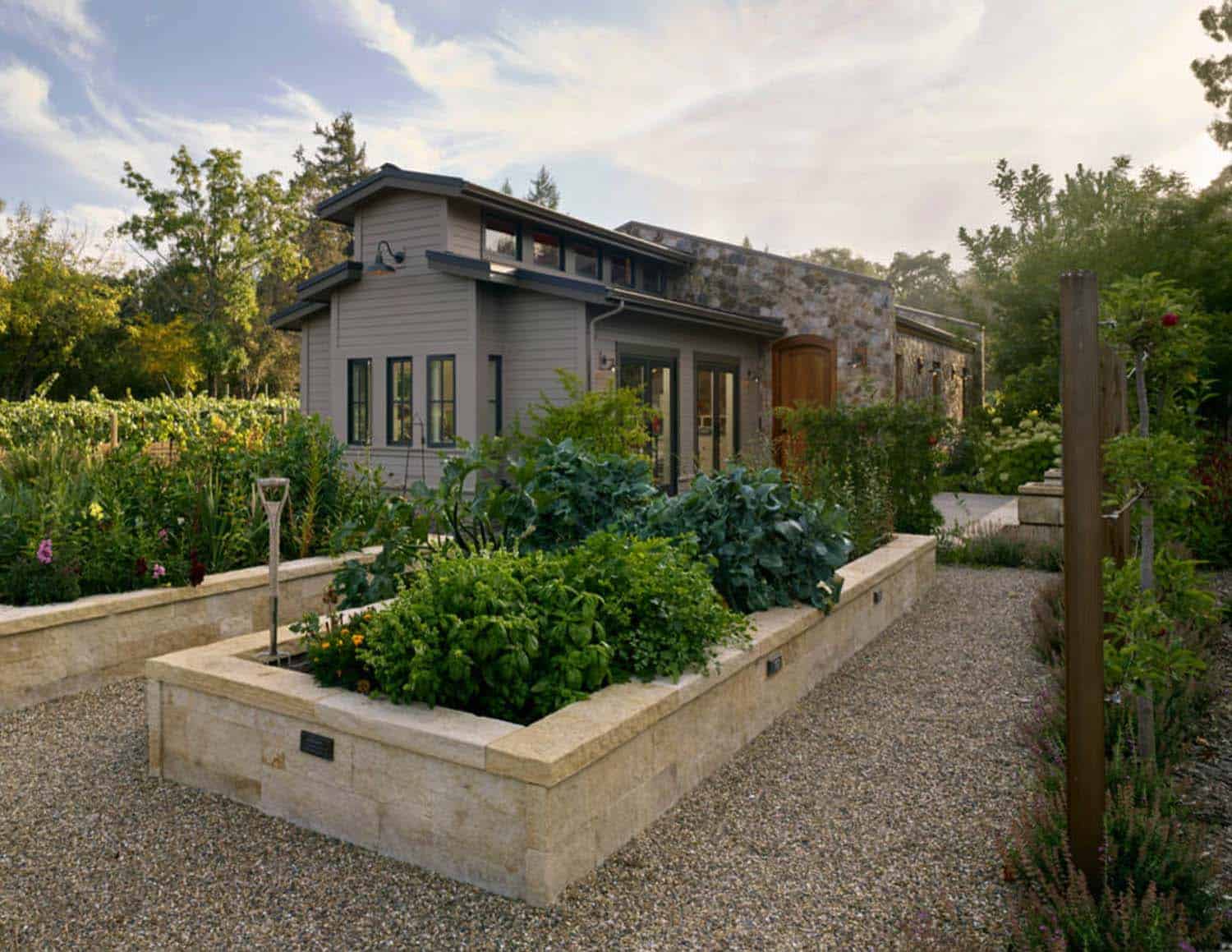
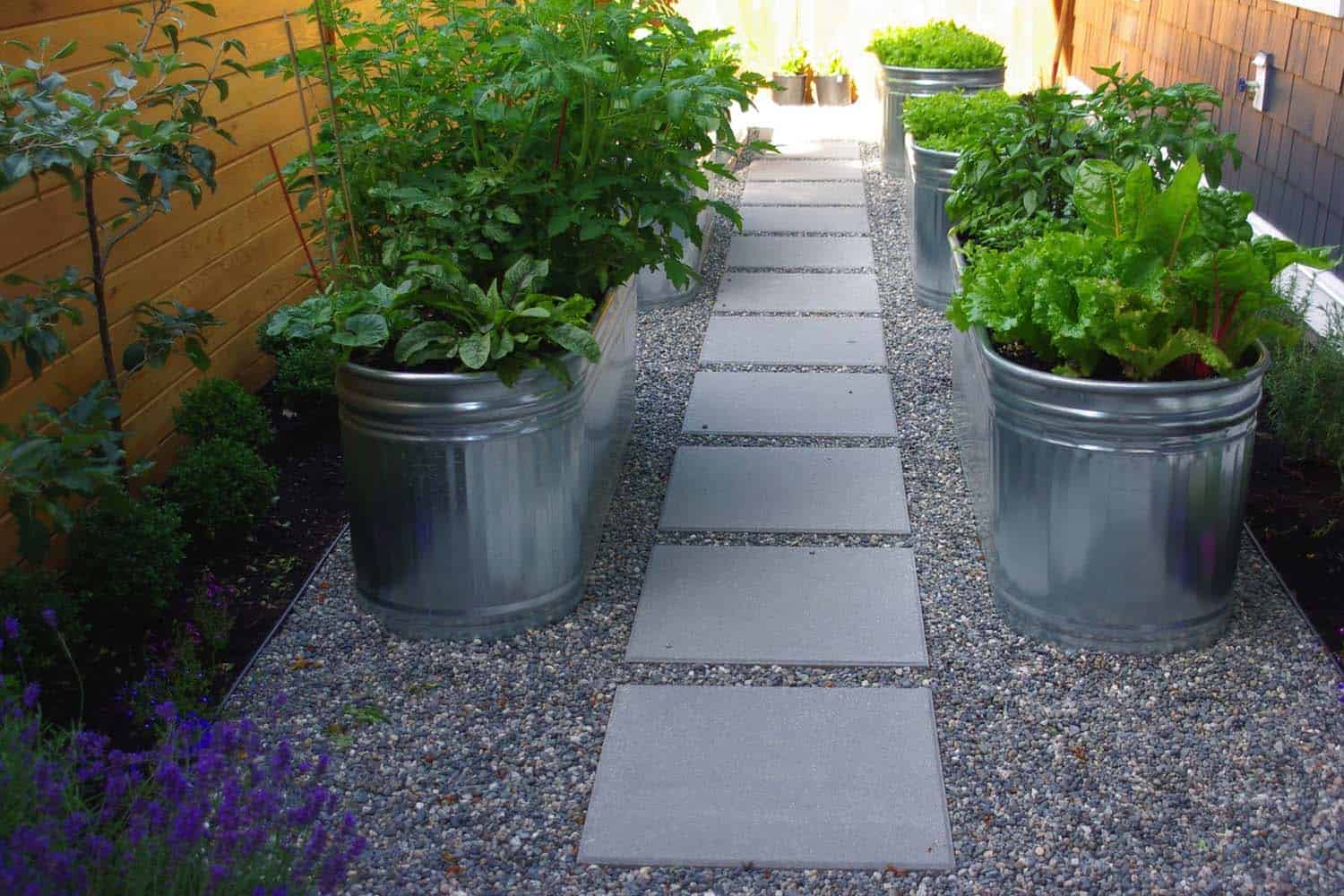

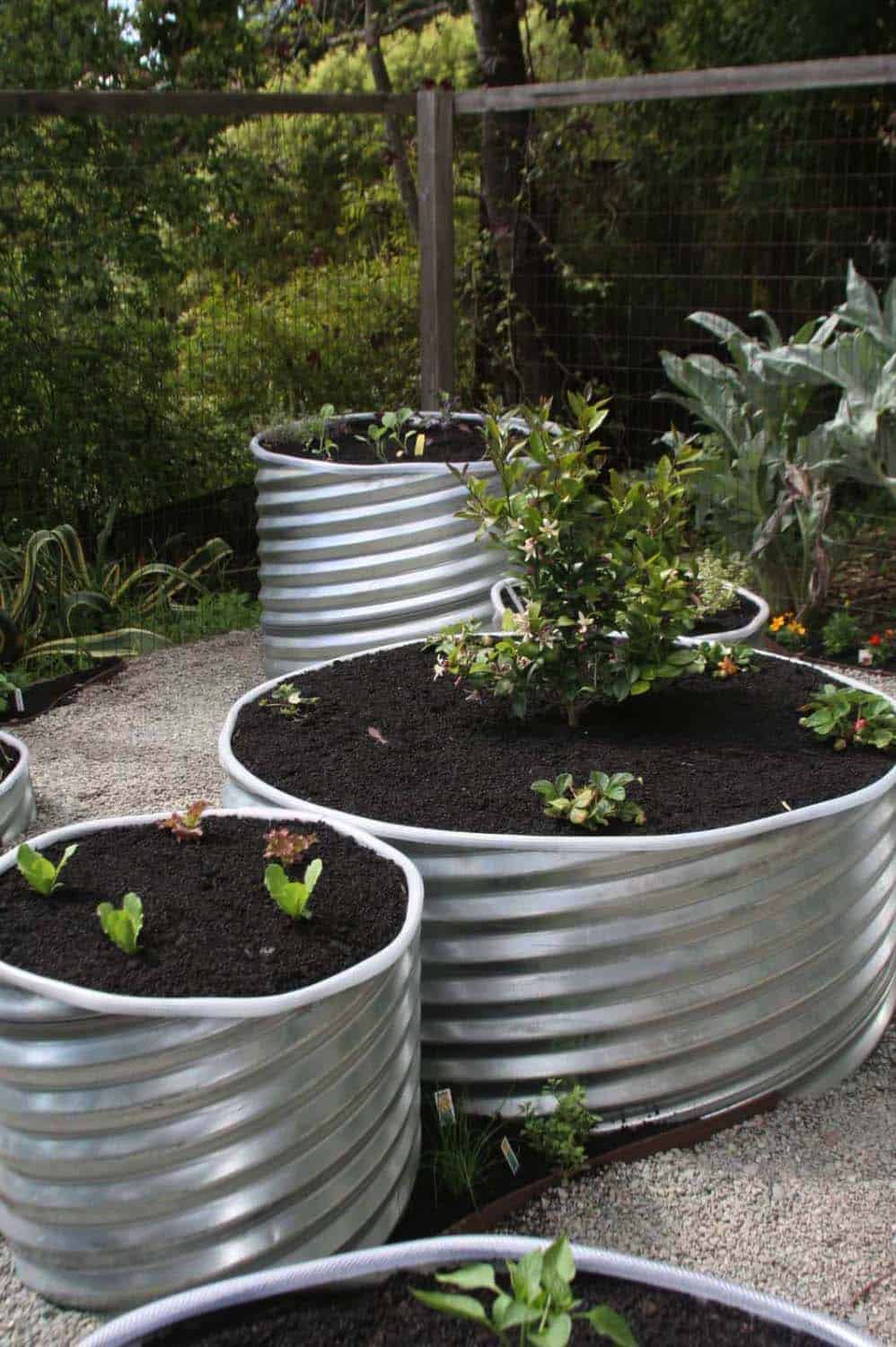
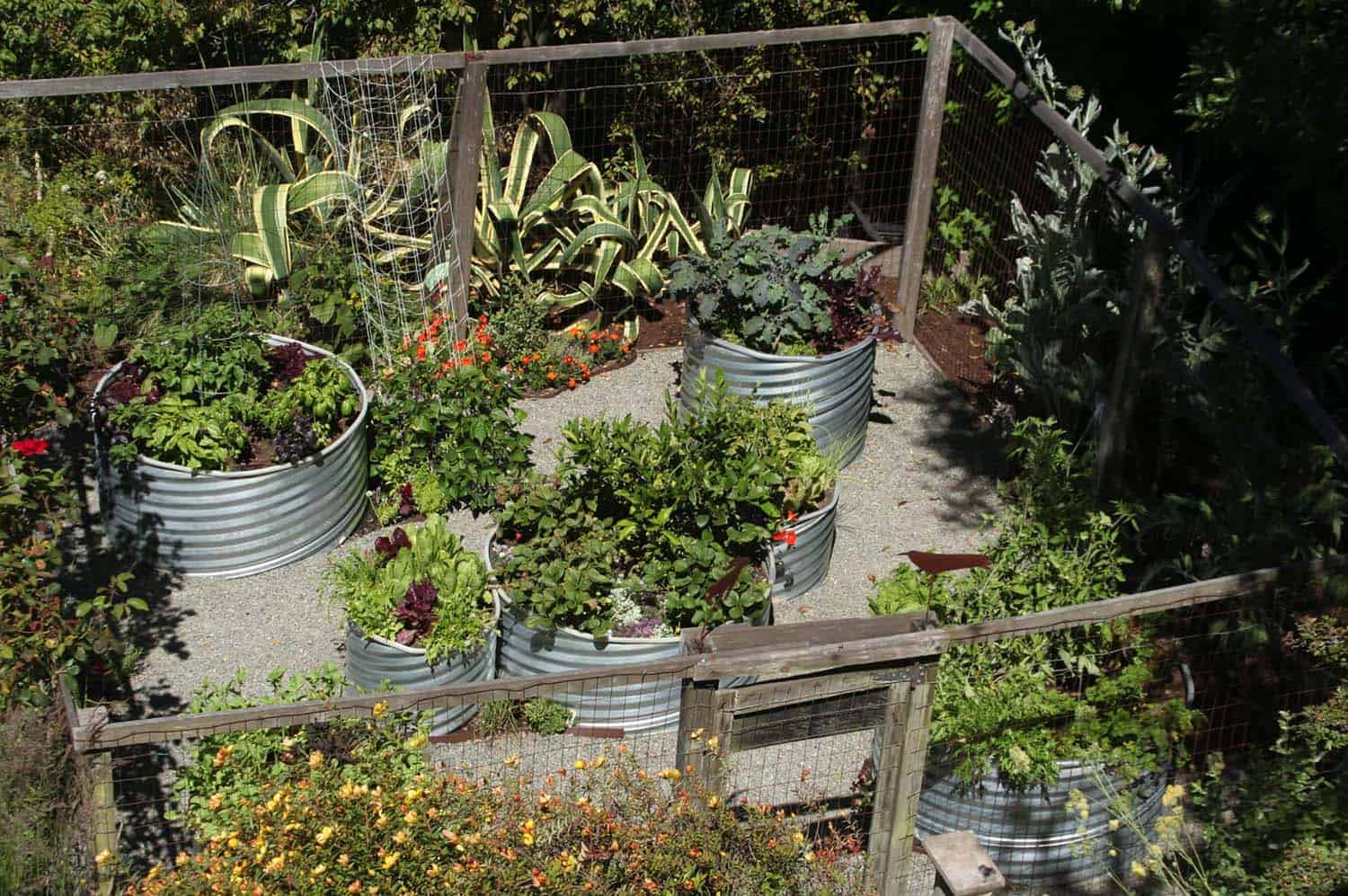
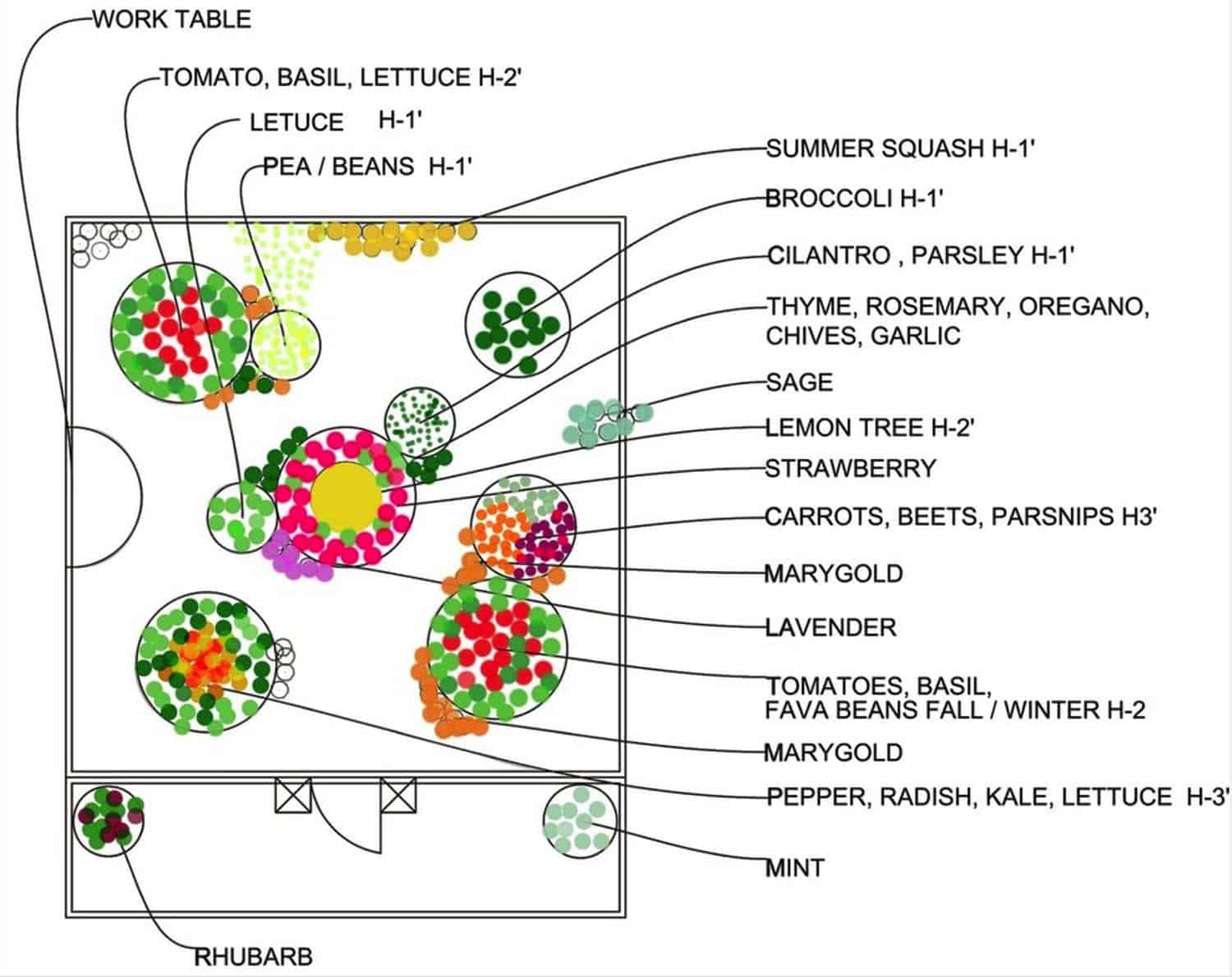


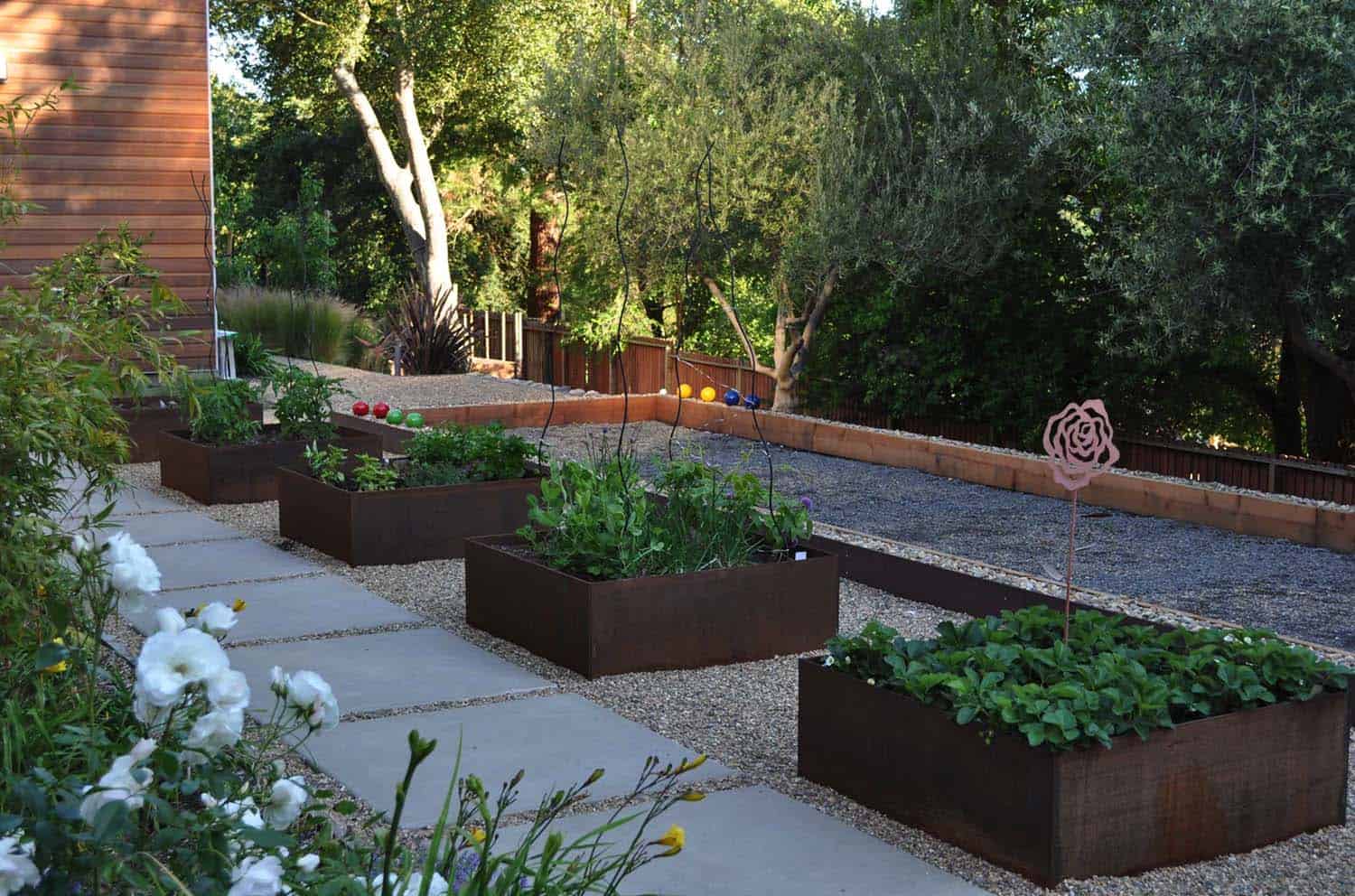
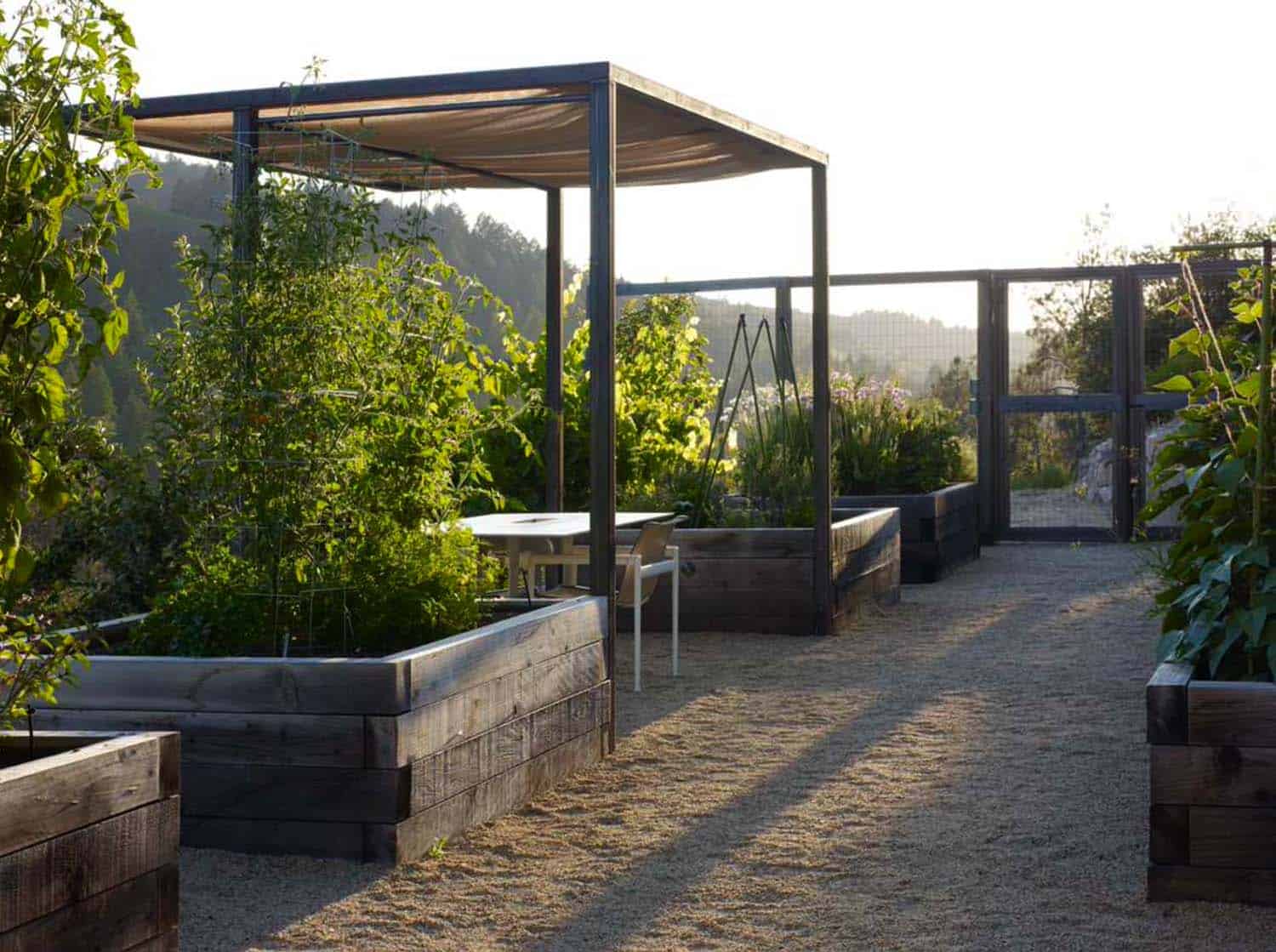
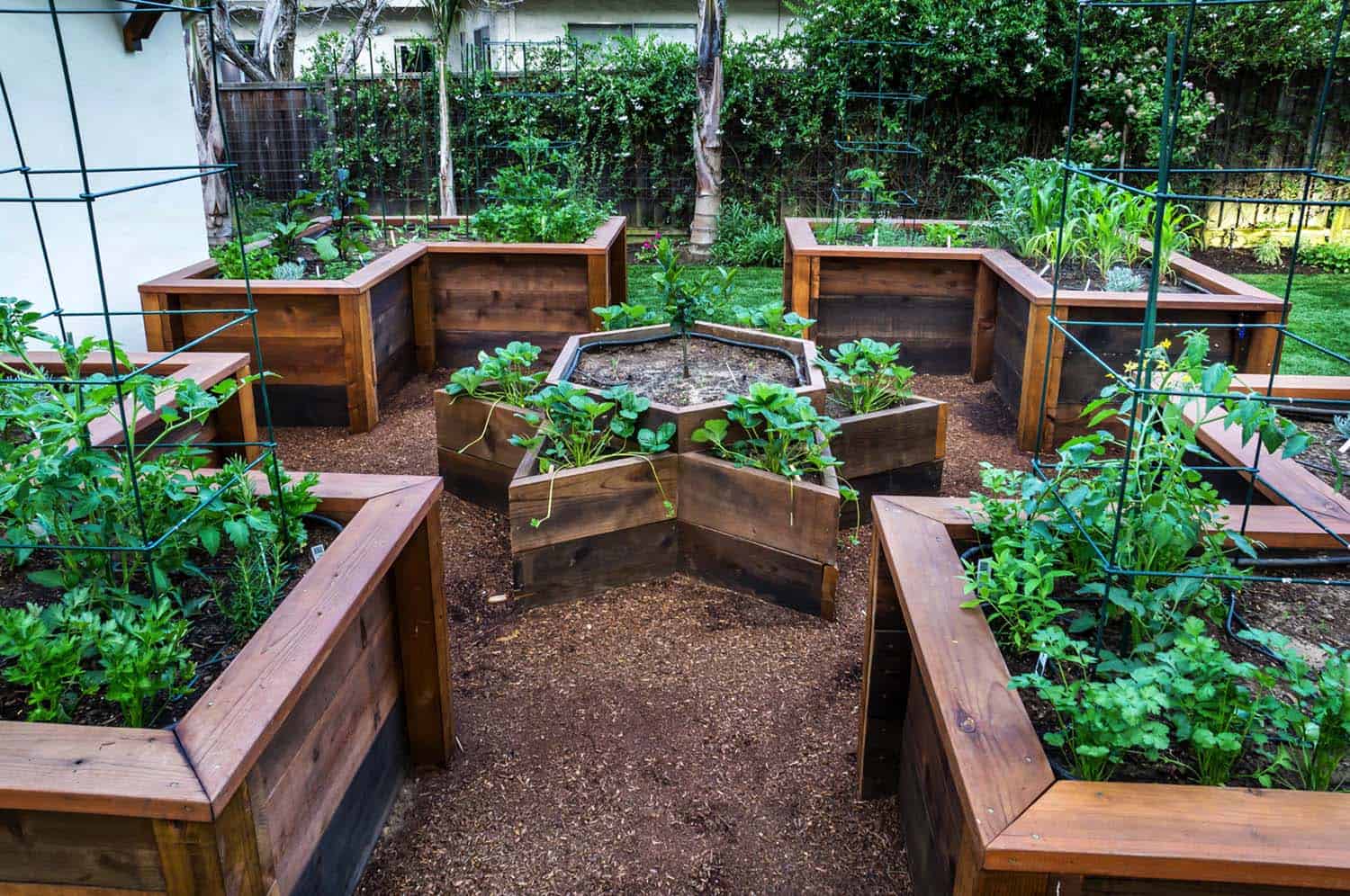
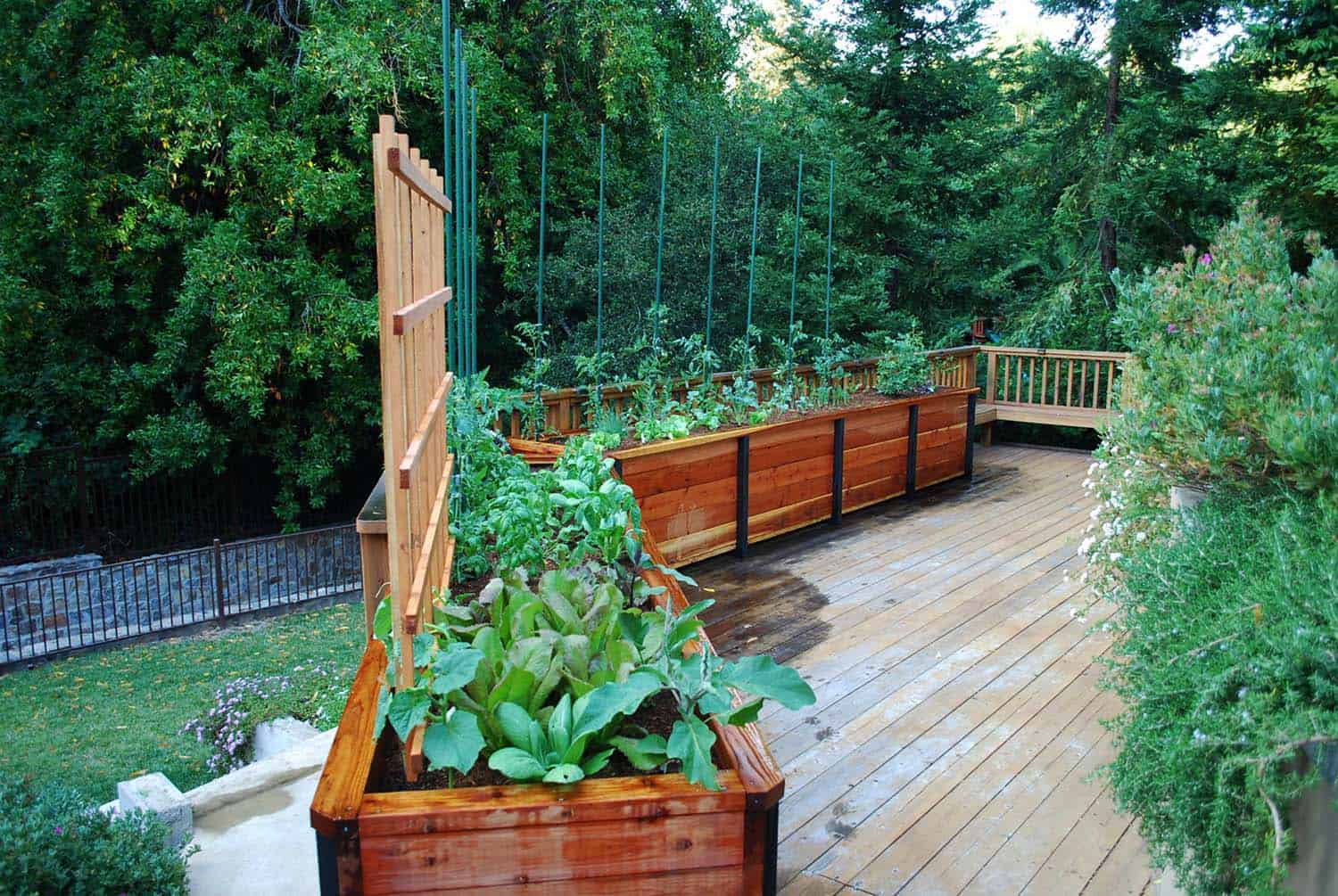
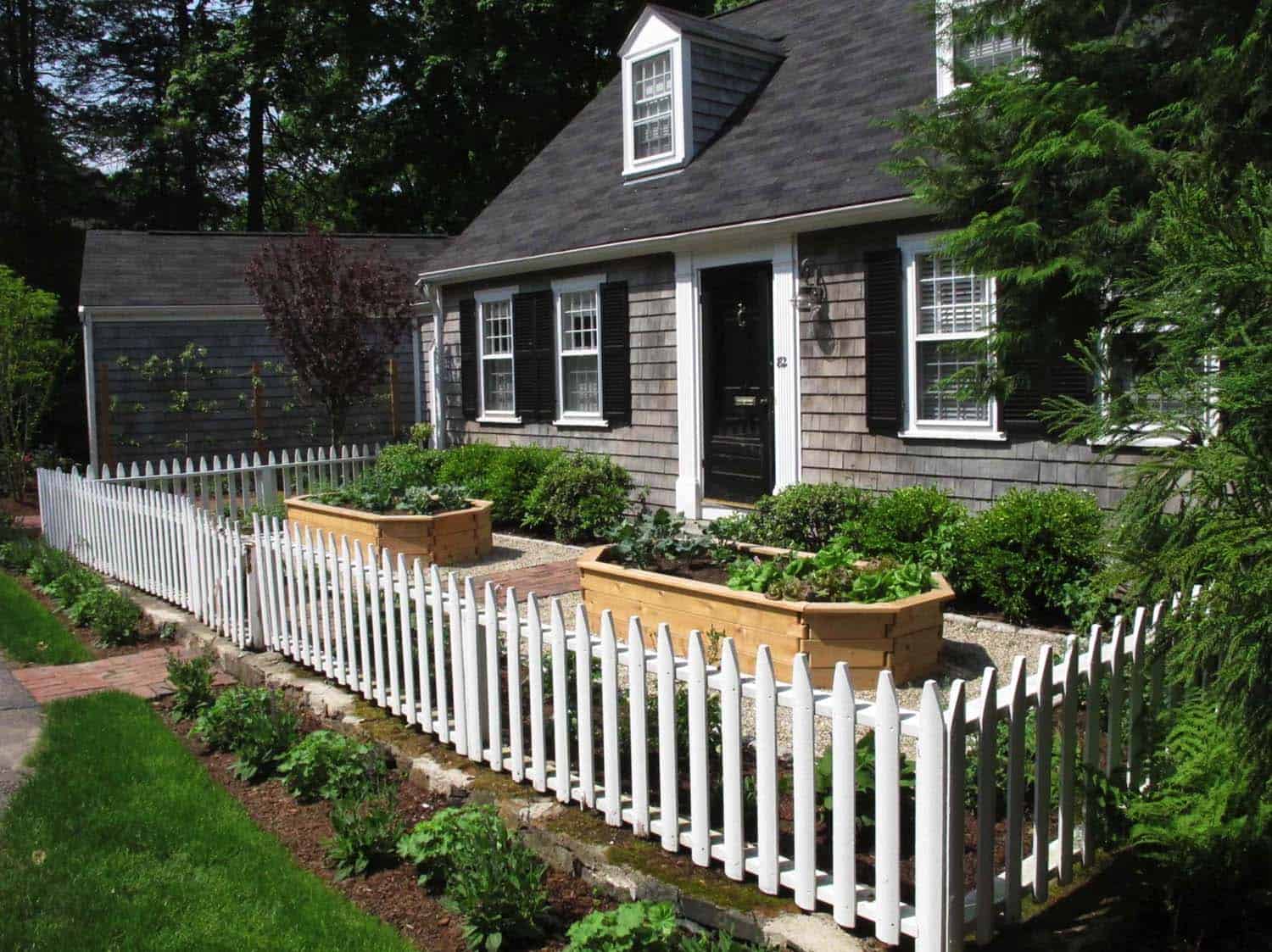
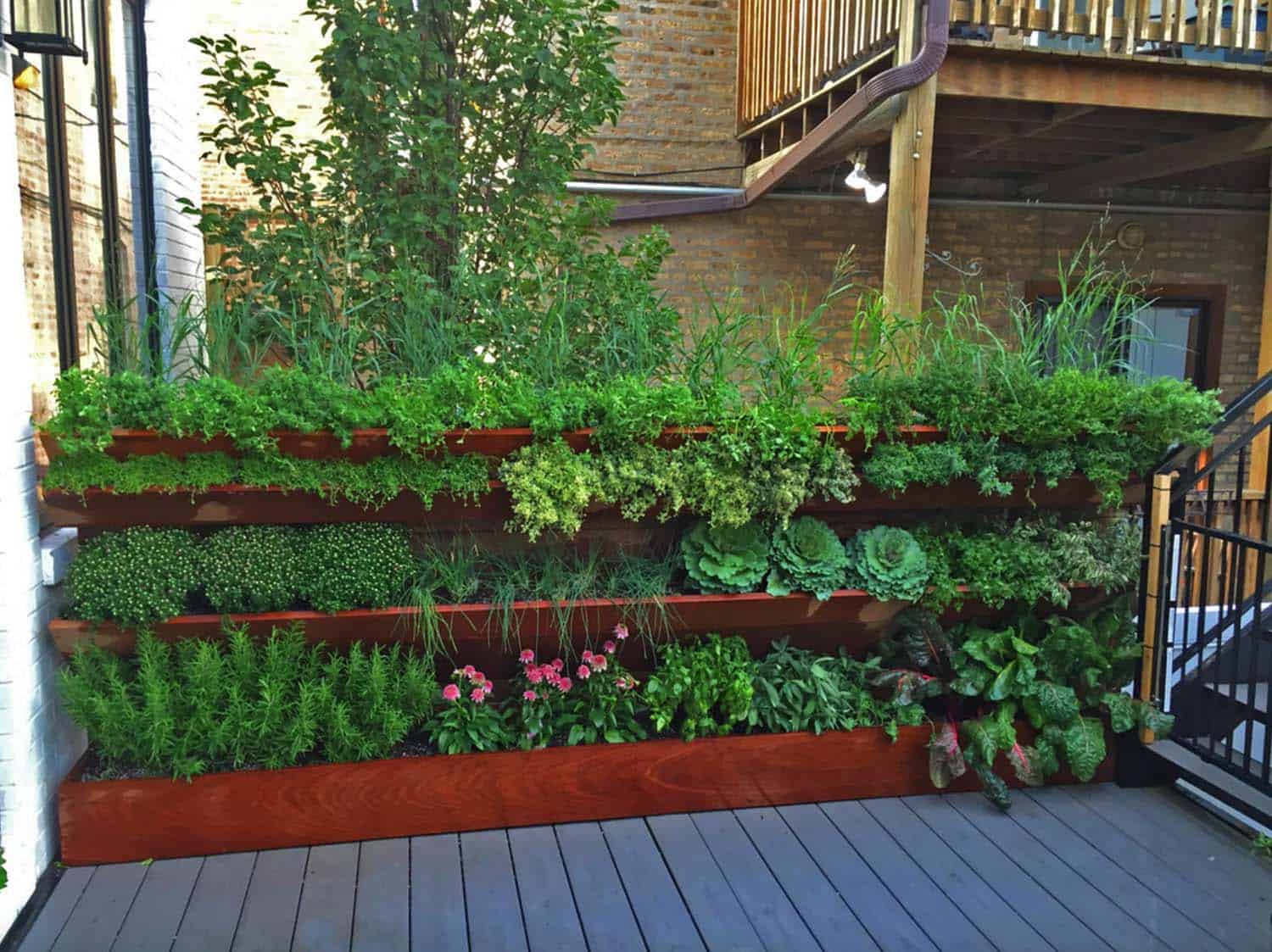
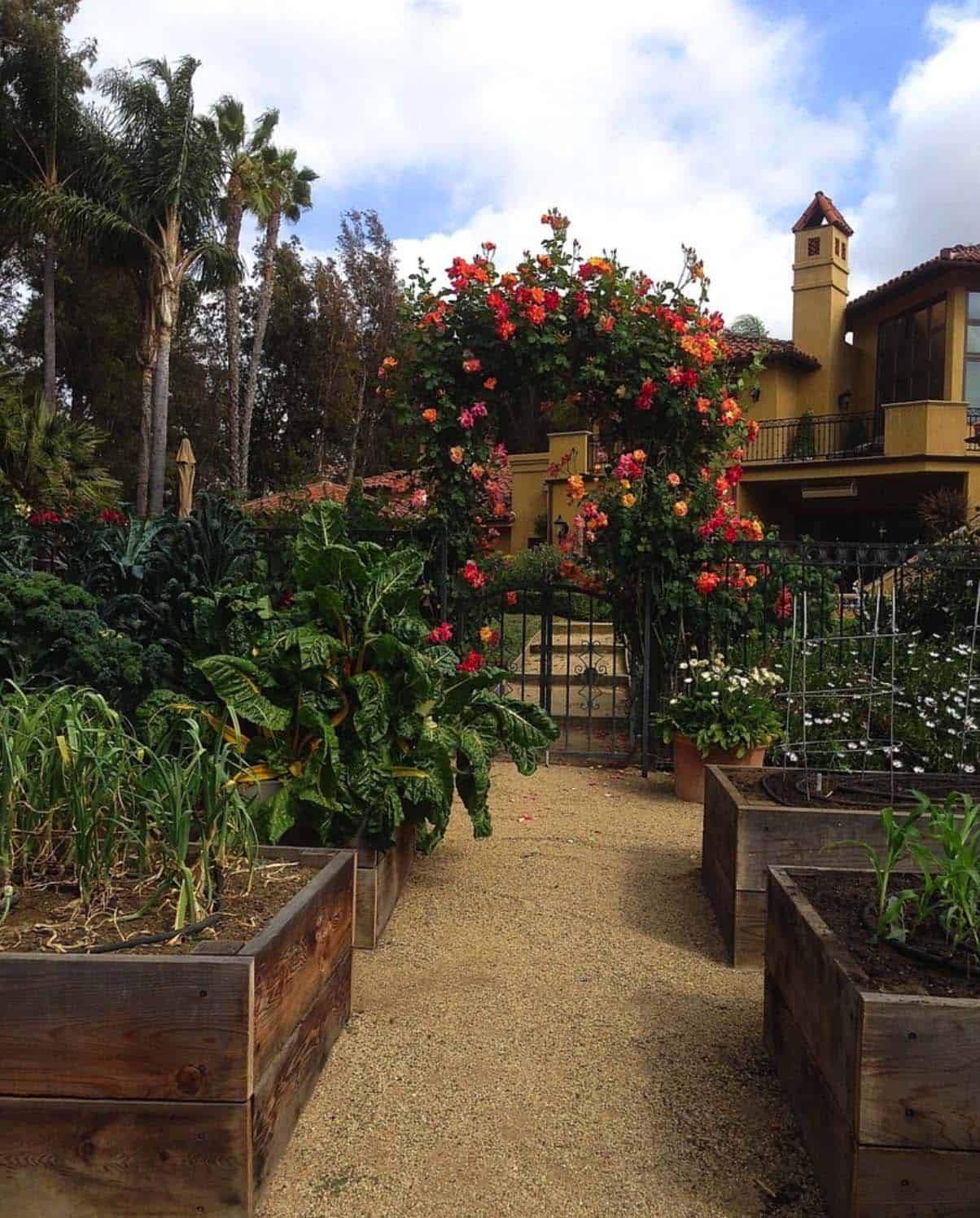

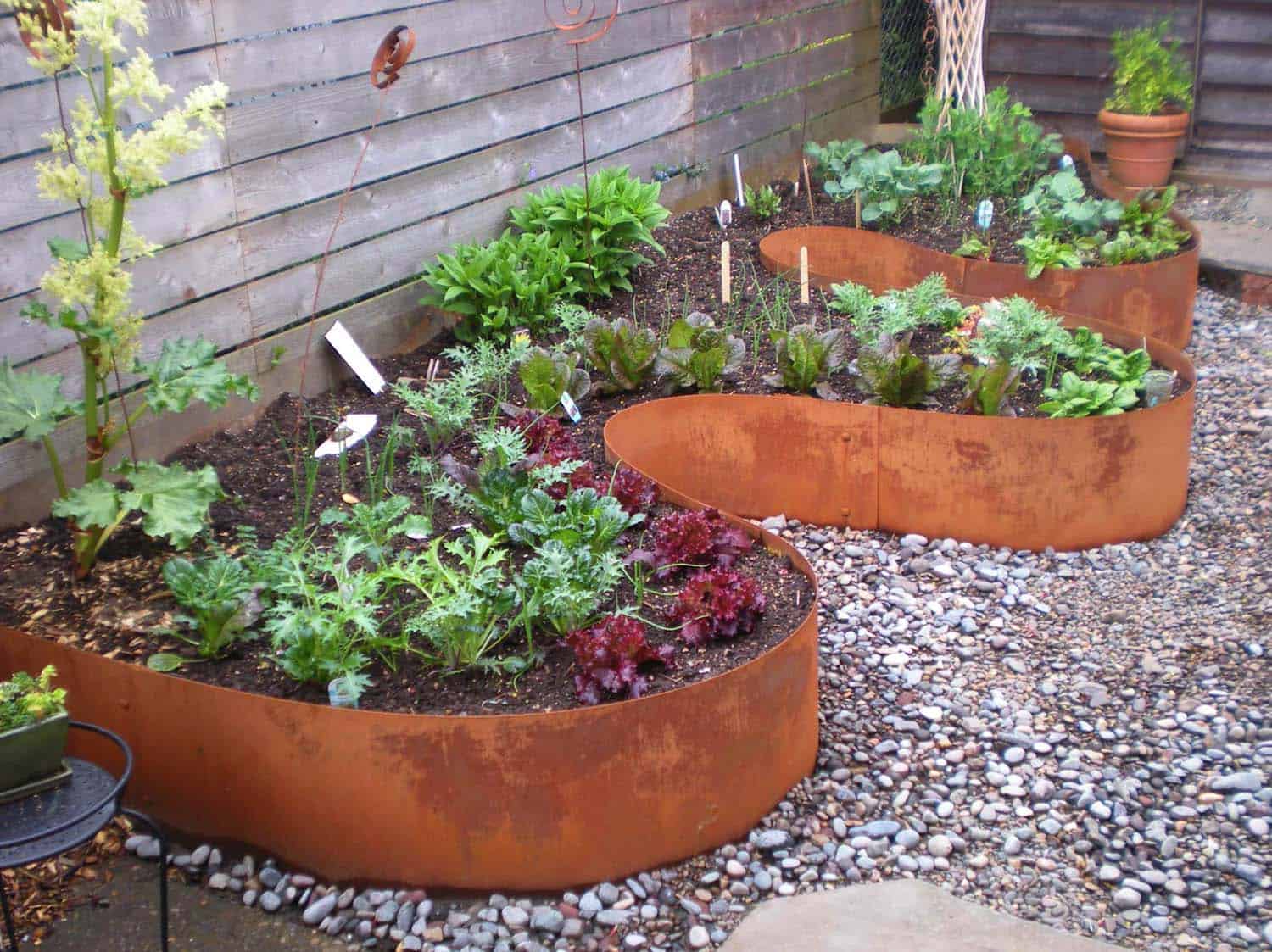
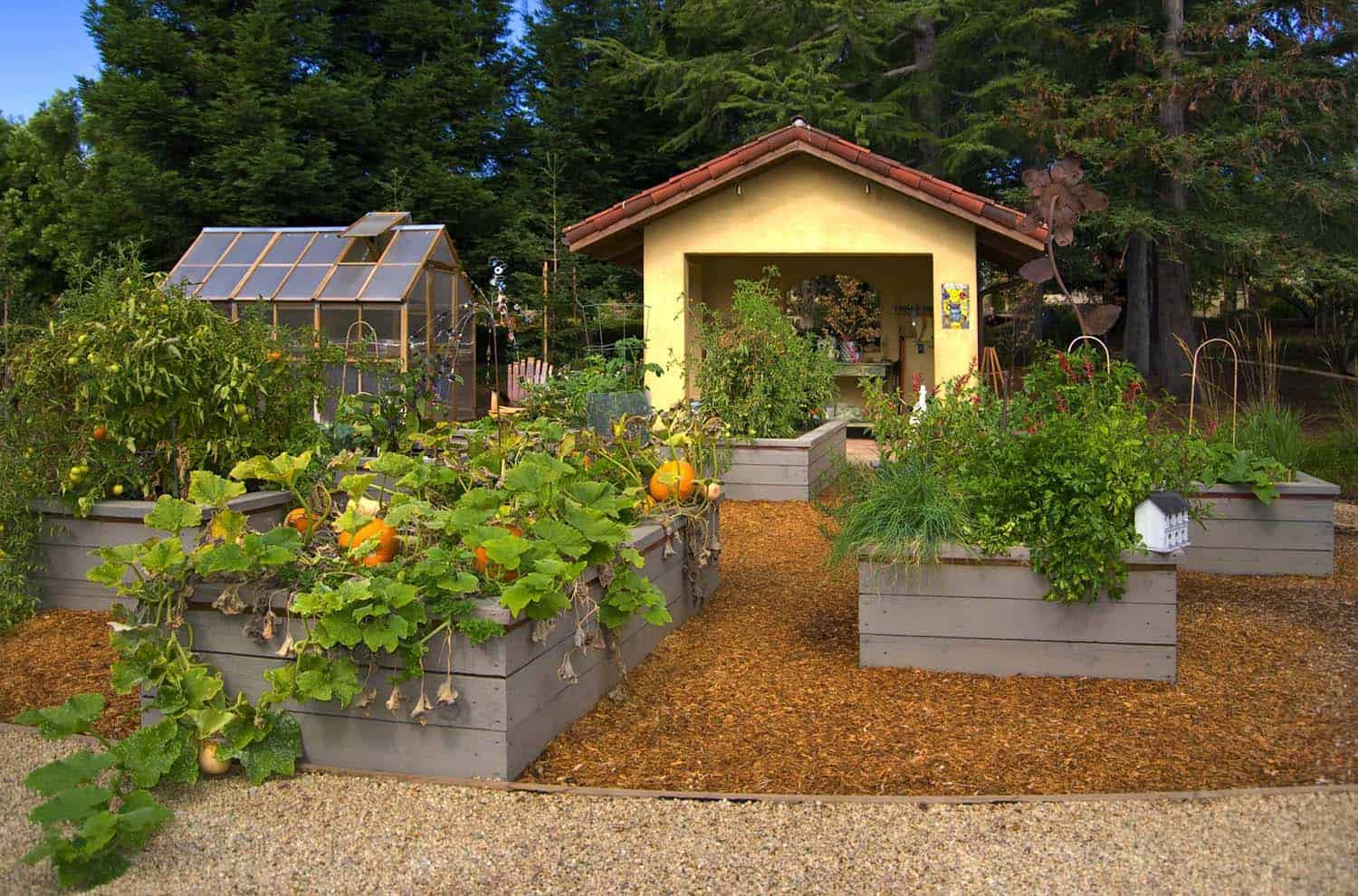

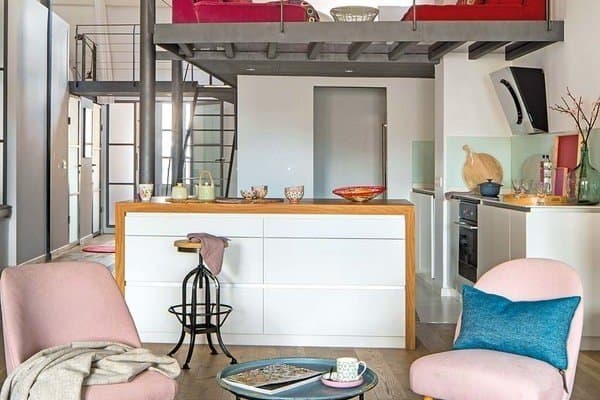

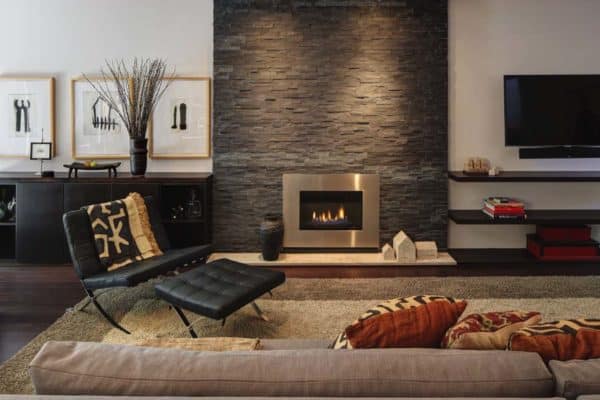
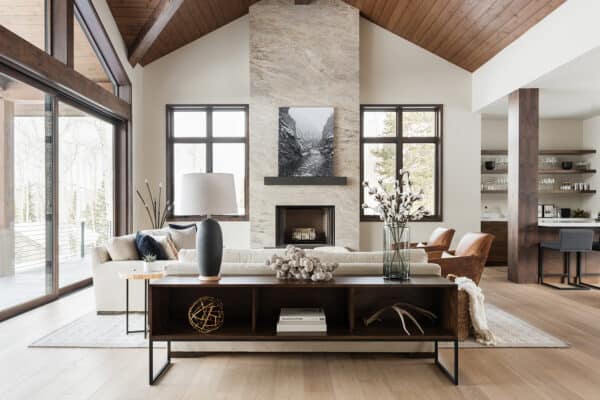
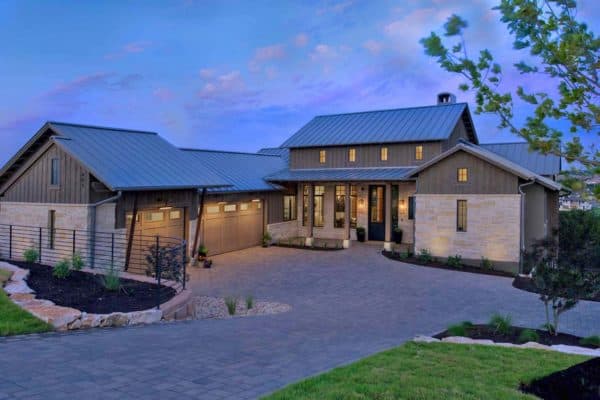

0 comments